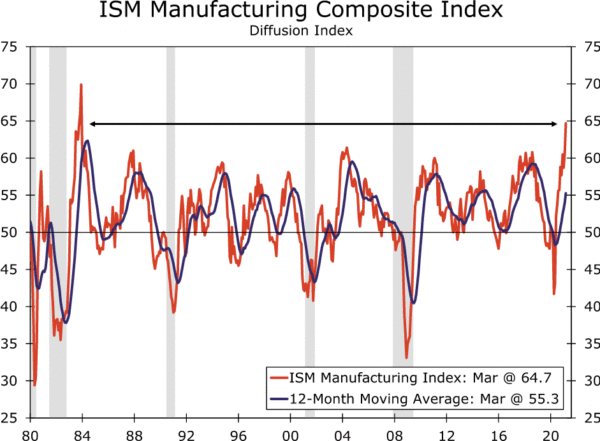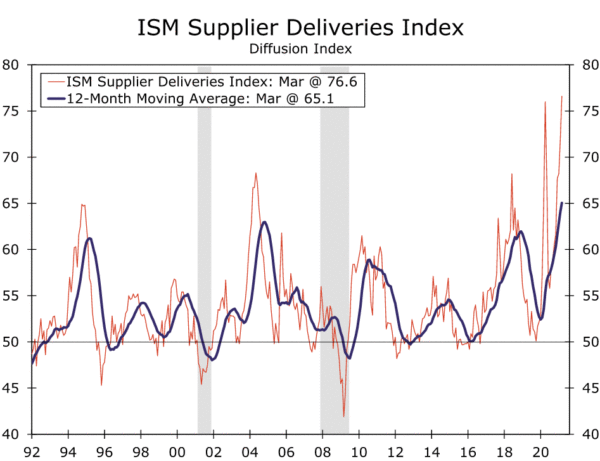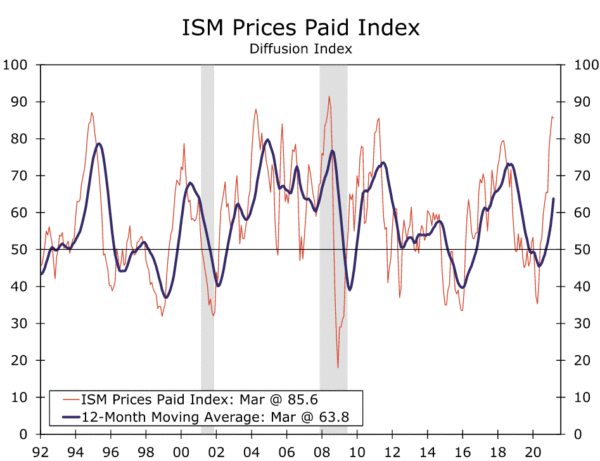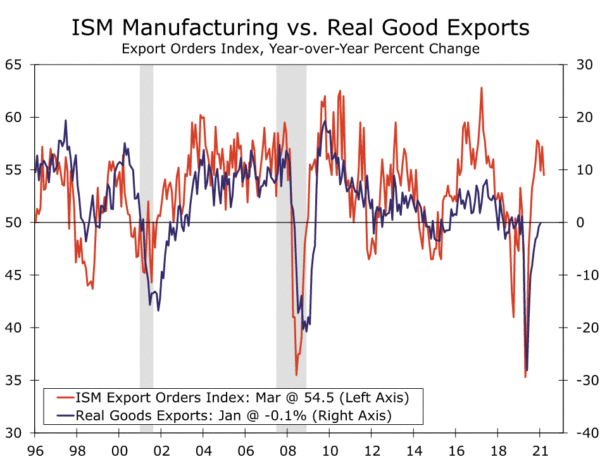Summary
The ISM manufacturing index soared to its highest reading since Ronald Reagan’s first term in 1983. While many components shot higher, a key factor was supply-chain constraints which drove supplier deliveries to its highest mark since 1974 when the oil embargo’s effects were still fading.
Factory Flex
The ISM manufacturing index catapulted to 64.7 in March—the highest reading in 37 years. Manufacturing sentiment is the most upbeat it has been in recent memory, although ongoing supply chain constraints continue to be a headache for businesses. This is evident in the fact that supplier deliveries jumped to 76.6 during the month. The ISM accepts submissions right up to the end of the month, so the Suez Canal blockage seems to have factored into supply chain dynamics, if only mentally at this point (the actual delays attributable to the grounding of the Ever Given specifically will spill out over the next several weeks). But, the recent blockage only builds on strains that were well underway prior to the last week’s prolonged closure of one of the world’s most important waterways. Comments noted ongoing issues from the severe winter weather in February, which was a major contributor to manufacturing output falling 3.1% last month.
Transportation and adverse weather is not the only factor generating long delivery times. As one respondent noted, “manpower is also a constraint.” Delays have stemmed in part from factories finding all the labor they need to meet the surge in demand as workers struggle with health concerns and childcare issues. With vaccinations ramping up, however, and more schools moving back to in-person learning, at least one element of recent bottlenecks may be abating. The employment index shot up more than five points last month to 59.6.
Manufacturers Test Out a New Power
The delays and lack of needed materials are translating into inflationary pressure. The prices paid component edged down just a few ticks last month to 85.6, which keeps it near a 12-year high. All 18 industries reported increases in raw materials last month. With new orders and backlogs surging to new cycle highs, we expect manufacturers to take advantage of the pricing power that was largely absent in the last cycle and pass some costs on.
Watch for a special report coming out later today that examines the supply chain issues as well as the extent to which bottlenecks are generating inflationary pressure and standing in the way of an even more robust economic rebound.
Hard to Pick Nits, but if We Were Pressed…
It takes a special kind of moxie to find fault with a report that is about as good as it gets by any measure, but the dismal science pre-selects for just that sort of built-in skepticism. One component that was not exactly marching to the same beat as the others in today’s blockbuster report was export orders, which slipped to 54.5 in March. Although still in expansion territory, it is the third monthly decline in the past four months, and points to a slowing in the otherwise impressive rebound thus far in real goods exports.
The U.S. economy is rebounding faster than other parts of the world, and while we do expect the rest of the world to catch up, this temporary divergence in the growth trajectories is consistent with our expectation for imports to outpace exports this year which, if realized, would result in a modest drag on GDP growth.


















